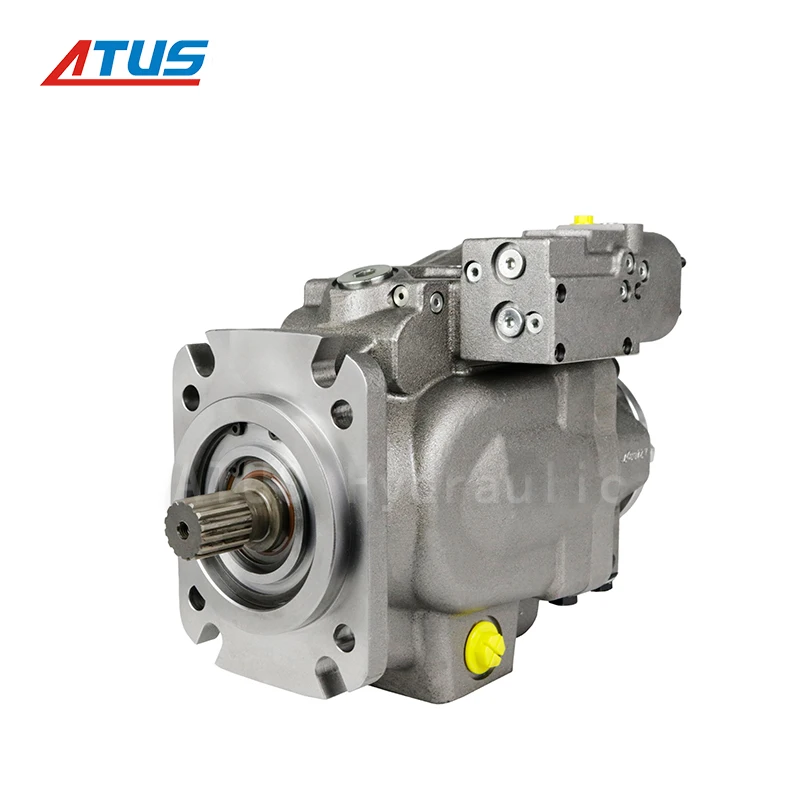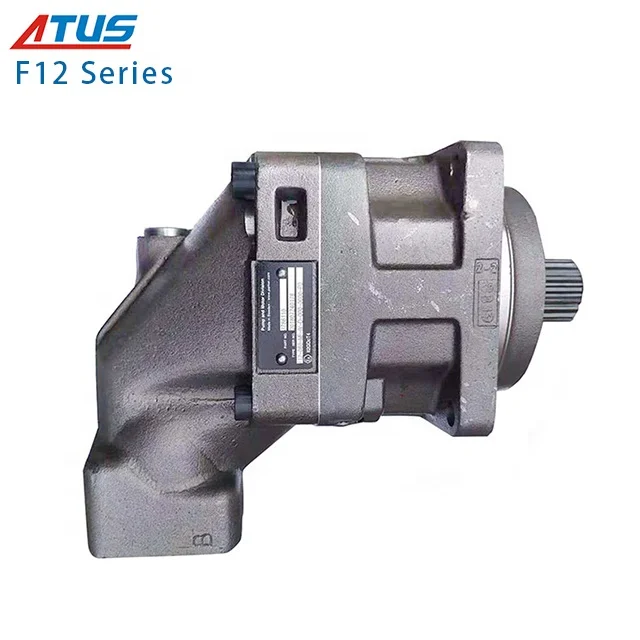### Core Functions of Hydraulic Gearboxes
Hydraulic gearboxes play a key role in turning mechanical power into hydraulic power, making them vital components in many industrial setups. The whole thing works thanks to Pascal's Principle basically saying when pressure hits a sealed fluid, it pushes back equally everywhere inside. What this means practically is torque gets multiplied, giving machines extra oomph where they need it most. We see this at work every day in construction sites and factories around the world. Real world tests have shown these gearboxes can boost productivity noticeably too. Heavy machinery operators report being able to handle bigger loads while actually needing less brute force from their equipment. For companies running large operations, this kind of efficiency translates directly into cost savings over time.
Gearing systems inside hydraulic gearboxes play a really important role when it comes to getting power where it needs to go. These setups work by using various gear ratios that help spread out power just right for whatever operation is happening at the moment. Most often we see two main types of gears here: planetary gears and spur gears. Both kinds contribute differently to how well the whole system works. Take planetary gears for example they're pretty famous among engineers because they take up less space while still handling loads quite nicely, which makes everything run smoother overall. When industries get serious about optimizing their gear arrangements within hydraulic boxes, machines tend to perform better, parts don't wear down so fast, and ultimately factories produce more goods without breaking a sweat.
Hydraulic gearboxes play a critical role in heavy machinery where they deliver the raw power needed to handle serious loads. These components make it possible for equipment to lift and transport massive weights without breaking down, which basically defines what most machines can actually accomplish on site. When looking at specs like load ratings and how efficient the hydraulic system runs, it becomes clear that manufacturers design these gearboxes according to strict industry requirements. They need to work reliably even when pushed hard day after day. Take ISO 281 standards for example. These set out exactly what kind of load capacities should be expected from different types of gearboxes. The fact that they keep functioning properly over long periods makes hydraulic gearboxes pretty much standard equipment across all sorts of heavy duty applications today.
Getting hydraulic gearboxes and gear pumps to work together right is pretty important if we want our hydraulic circuits to run efficiently. Take external gear pumps for example they fit really well with most standard hydraulic gearboxes, which makes them good partners for boosting system performance. What these pumps basically do is push liquid through the system at pressure, so energy moves where it needs to go without wasting too much along the way. From what many engineers have seen in the field, when gear pumps are properly matched with their corresponding gearboxes, flow rates tend to be better and the whole circuit just runs smoother. Some actual testing on real equipment shows that circuits with good gear pump gearbox combinations produce significantly better mechanical results than mismatched ones, something manufacturers definitely take note of when designing new systems.
Engine oil pumps play a major role in getting fluids moving properly through hydraulic systems, especially when it comes to keeping those hydraulic gearboxes well lubricated. When gearboxes get proper lubrication, they run better and last longer before needing replacement. Looking at how fluids actually move around helps manufacturers figure out ways to improve flow in their systems. Some companies have reported up to 30% better performance after adding engine oil pumps to their setups. What these pumps do basically is keep the fluid circulating all the time, which cuts down on friction inside the gearbox. Less friction means less wear and tear on components, so overall the whole system performs better and breaks down less often than without them.
When it comes to hydraulic ram pumps, getting those hydraulic gearboxes right in the pressure regulation setup really makes all the difference. Without proper pressure control, these systems just won't run safely or efficiently over time. Keep those pressure levels where they should be and the whole system performs better while staying within safe operating parameters. Look at any industry that's successfully implemented good pressure management practices and they typically see their hydraulic systems running smoother and lasting longer between maintenance cycles. The way these systems actually work involves drawing power through those gearboxes to handle fluctuations in pressure, which means operators can fine tune operations across different settings like manufacturing plants or heavy construction sites where precision matters most.
The P2/P3 double plunger pump stands out as a powerhouse option for roadheaders, capable of producing impressive high pressure hydraulics needed in tough mining and tunneling jobs. What sets this pump apart are its built-in features specifically meant to survive harsh industrial settings where regular equipment would fail. The dual plunger setup gives operators peace of mind knowing their system will keep running without hiccups during those long shifts underground. Workers rely on these pumps day after day for critical operations like breaking through hard rock formations and moving excavated materials from site to site.

When looking at how it performs day to day, the P2/P3 pump delivers impressive flow rates and pressure output that really matters when digging through tough ground in tunnels. The pump gives operators fine grain control over hydraulics so there are fewer stoppages during work shifts, which means better safety records on site and workers get their tasks done faster. Real world data from construction sites shows these pumps hold up well over time. Contractors working on major infrastructure projects have noticed their systems break down less frequently compared to older models, even when running non stop for weeks at a stretch.
Piston pumps play a really important role in mining equipment because they keep working reliably and efficiently even when things get tough and gritty. These pumps can handle pretty rough situations, which makes them absolutely necessary for machines that run nonstop day after day. Take the Parker Piston Pumps Set for instance, specifically the P2145 and P2105 models. These particular units showcase some seriously durable construction along with cutting edge pumping tech that just keeps on performing at its best level. Many operators swear by these models since they've stood the test of time in some of the most challenging mining environments around the world.

The models' specifications indicate their superior output capabilities, essential for the continuous operation requirements of the mining industry. Data-driven evaluations reveal that these piston pumps offer enhanced performance flexibility and resilience, providing a competitive edge in productivity and reliability in mining operations.
The F12-030 hydraulic feeder motor is an integral component for mobile impact crushers, guaranteeing smooth and efficient operation critical for optimal crushing output. This hydraulic motor is engineered to withstand rigorous conditions, providing exceptional torque and consistent speed for continuous, high-demand functions within the crusherâs hydraulic system.

The F12-030 motor really shines because of how tough it is built, the cutting edge hydraulics inside, and its small footprint that makes installation straightforward. Looking at the numbers from tests and what the factory says about specs, this motor can actually increase how much material crushers process per hour. For anyone working on construction sites or running mines, this kind of improvement means real money saved over time while keeping operations running smoothly day after day.
Getting the right hydraulic fluid makes all the difference when it comes to keeping gearboxes performing well and lasting longer. These fluids work as lubricants inside the gearbox, cutting down on friction and wear so the system doesn't break down as quickly. When picking out hydraulic fluid, understanding what different types can do matters a lot. Look at things like how thick the fluid is (viscosity), whether it holds up under heat changes (thermal stability), and if it protects against rust and corrosion. Research indicates thicker fluids tend to work better where there's heavy loading, whereas fluids that handle temperature swings without breaking down are ideal for places where conditions vary throughout the day. And don't forget about this either – what kind of fluid gets used actually affects how fast the gearbox components start wearing out, which means making smart choices upfront saves money and headaches later on.
Checking pressure thresholds regularly in hydraulic circuits is really important if we want to keep systems running properly and avoid breakdowns. These hydraulic systems work based on things like Pascal's Law and Bernoulli's Principle, basically explaining how fluids move when pressure changes. Maintenance crews need to go through their checking routines methodically, looking out for any pressure fluctuations that might mess up how the whole hydraulic circuit functions. Keeping records of all these checks matters too. When something goes wrong, having documented what steps were taken becomes super helpful for anyone dealing with the problem later on. The numbers don't lie either many plants have experienced major downtime simply because regular pressure checks got overlooked, showing just how vital these routine inspections actually are for keeping operations going smoothly.
Looking at wear patterns in hydraulic pump parts makes all the difference when it comes to fixing problems before they happen and stopping breakdowns. Different kinds of hydraulic pumps (think pistons, gears, vanes) show different signs of wear depending on how they're used day to day. When technicians check these components regularly, they can spot trouble spots early on. Things like checking vibrations or using heat imaging give real insight into what's going on inside those pumps. According to what many shops have seen over time, doing regular wear checks cuts down maintenance expenses because small issues get fixed before turning into big headaches. The bottom line? Hydraulic systems run better when we keep an eye on their condition instead of waiting until something breaks. For anyone who relies on hydraulics in their operations, making wear analysis part of standard maintenance isn't just smart it's practically essential if wanting to avoid unexpected downtime and expensive fixes later down the road.